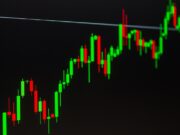In the late 1850s, the American oil industry was nothing more than an inkling in the minds of ambitious entrepreneurs. Among them was Edwin Drake, a former railroad conductor, who journeyed to Titusville, Pennsylvania, driven by reports of ‘rock oil’ seeping from the ground. Despite mockery from locals, Drake’s persistence led to the establishment of the first commercial oil well in 1859, a breakthrough that would forever change the American landscape.
But the story of oil is not just about the resource; it’s about the indomitable spirits of those who pursued it. Men like John D. Rockefeller, who entered the fledgling industry by investing in a Cleveland refinery. Rockefeller’s Standard Oil grew, absorbing competitors and innovating transportation and refining methods, eventually controlling 90% of America’s refineries and pipelines. His empire, though controversial, laid the groundwork for the modern oil industry.
Parallel to Rockefeller’s ascent, others like Samuel Dodd made legal strides, navigating corporate laws to establish trusts, reshaping the business landscape. Meanwhile, pioneers like Lyne Taliaferro Barret drilled the first oil well in Texas, and Patillo Higgins foresaw the potential of the Spindletop area, leading to a gusher that marked the Texas Oil Boom. These visionaries, though different in approach, were united by resilience, innovation, and sheer willpower.
From Barons to Modern Moguls: America’s Evolution Powered by Oil
The legacies of early oil barons set the stage for America’s global economic dominance. Towns like Tulsa and Beaumont transformed from sleepy communities to booming cities, known as the “Oil Capitals of the World.” The wealth generated from oil financed institutions, universities, and infrastructural projects, embedding the industry within the American identity.
Throughout the 20th century, the influence of oil magnates extended beyond business, impacting politics and society. The Mellon family, known for Gulf Oil, wielded significant political influence, with Andrew Mellon serving as the U.S. Secretary of the Treasury. Families like the Gettys and the Hunts became synonymous with wealth and philanthropy, their fortunes built on oil shaping cultural and artistic institutions.
However, the landscape wasn’t without conflict. Monopoly-busting laws fragmented giants like Standard Oil, spawning companies that remain industry leaders, like ExxonMobil and Chevron. Labor strikes, environmental debates, and geopolitical tensions over oil-rich regions underscored oil’s complexity in global economics and politics.
Oil’s Global Theater: Powering Economies, Shaping Conflicts
Oil, often termed ‘black gold,’ has been at the heart of global events, from both World Wars to the modern Middle East conflicts. Nations’ insatiable thirst for energy turned oil fields into strategic assets, influencing diplomatic relationships and military strategies. The 1973 OPEC oil embargo, a geopolitical maneuver in the Arab-Israeli conflict, demonstrated oil’s power, triggering economic shockwaves worldwide.
Today, oil’s influence permeates all economic sectors, from petrochemicals to transport. Fluctuations in oil prices can send global markets spiraling, affecting consumer products, from groceries to airline tickets. Developing nations, seeking the wealth that oil brought to countries like the United Arab Emirates and Saudi Arabia, grapple with ‘resource curses,’ where oil wealth doesn’t translate to societal benefit.
As climate change concerns mount, the industry faces existential questions, balancing profitability with environmental responsibility. However, even green technologies rely on oil for production components, making a complete departure from oil a distant reality.
Investing in Liquid Gold: Three Stocks for the Savvy Investor
Despite market volatility and geopolitical tensions, oil investment offers substantial returns. Here are three U.S. oil stocks representing the industry’s past, present, and future:
- ExxonMobil (XOM)
- Overview: One of Standard Oil’s successors, ExxonMobil stands as the largest direct descendant. Despite recent challenges, its diversified portfolio, spanning from upstream to downstream operations, presents a stable investment.
- Analysis: With strategies addressing environmental concerns and investments in sustainable energy, ExxonMobil aims to retain market relevance, offering long-term investment security.
- Chevron (CVX)
- Overview: Another Standard Oil offshoot, Chevron, commands respect in the industry. Its global presence and balanced energy portfolio make it a formidable ExxonMobil counterpart.
- Analysis: Chevron’s commitment to lowering carbon emissions and its robust capital allocation strategy favor risk-mitigated, long-term growth, appealing to environmentally conscious investors.
- ConocoPhillips (COP)
- Overview: The world’s largest independent exploration and production company, ConocoPhillips has a history stretching back over a century.
- Analysis: With a focus on high-margin, low-cost projects, and a forward-looking approach to renewable energy investment, ConocoPhillips offers a blend of stability and innovation.
Conclusion: The Undying Legacy of American Oil
From Edwin Drake’s first oil well to today’s energy conglomerates, oil’s saga is a testament to human ingenuity and ambition. As we stand on the cusp of renewable energy frontiers, oil’s historical significance and future potential remain undeniable. For investors, these stocks are not just financial instruments but tickets to a continuing journey, a saga of triumph, tribulation, and the relentless human spirit.
Where to invest $500 Right Now?
Before you consider buying any of the stocks in our reports, you’ll want to see this.
Investing legend, Marc Chaikin just revealed his #1 stock for 2024…
And it’s not in any of our reports.
During his career of nearly 50 years, Marc Chaikin was one of the quantitative minds behind some of the most famous investors in history: Paul Tudor Jones, George Soros, Steve Cohen, and Michael Steinhardt.
Even the Nasdaq hired him to create three new indices.
And now he’s going live with his #1 pick for 2024.
You can learn all about it on Mr. Chaikin’s Website, here.
Wondering what stock he’s investing in?
Click here to watch his presentation, and learn for yourself…
But you have to act now, because a catalyst coming in a few weeks is set to take this company mainstream… And by then, it could be too late.
Click here to reveal the name and ticker of Marc Chaikin’s no. 1 pick for 2024…
You might also like:
- A.I. Gamechanger Says “$2.50 Stock Set to Breakout Overnight”
- Mysterious Gold Leverage Just Announced
- Elon’s New A.I. Device is About to Shock the World
- Prepare Now Before This Looming $2 Trillion D.C. Shock
- Buy Elon Musk’s New $1 Play before June 30
- Write this ticker symbol down…
- The Crypto Melt-Up has Begun
- “A.I. is a Tidal Wave” – Here’s What to Buy
- Beware Executive Order 14067
- #1 AI Stock for 2024 and Beyond



















